 In his article at The Blue Review — Beyond the Friendly, Two Idaho Immigration Stories — Mark Bieter takes the opportunity of the Basque Soccer Friendly, to be played this evening between Athletic Bilbao and Club Tijuana, to delve into the history of the two cultures these teams represent, the Basques and the Mexicans. Both have played an important role in the history of the American West and the economy of states like Idaho. A nice read that reminds us that, more often than not, people have more in common than we tend to realize.
In his article at The Blue Review — Beyond the Friendly, Two Idaho Immigration Stories — Mark Bieter takes the opportunity of the Basque Soccer Friendly, to be played this evening between Athletic Bilbao and Club Tijuana, to delve into the history of the two cultures these teams represent, the Basques and the Mexicans. Both have played an important role in the history of the American West and the economy of states like Idaho. A nice read that reminds us that, more often than not, people have more in common than we tend to realize.
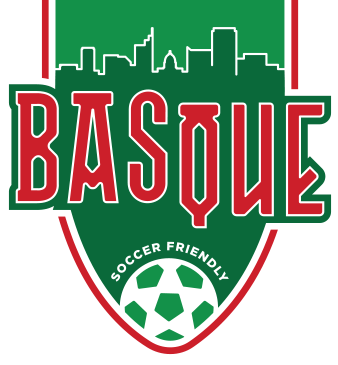
Today is the Day! Basque Soccer Friendly is Today! And you can Live Stream it!
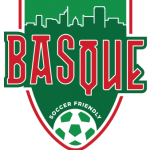 Today is the day that many have been anxiously awaiting, the day that Athletic Bilbao takes on Club Tijuana in Boise’s Albertson Stadium, the home of the Boise State Broncos, in the Basque Soccer Friendly! As I write this, the match will take place in less than 11 hours. An amazing achievement, a testament to the hard work of many, in particular Argia Beristain and Keenan Dougherty. Despite a conflict first with MLS’s all star game and then with Blibao’s own entry into the Europa League championships, they made this happen. Zorionak!
Today is the day that many have been anxiously awaiting, the day that Athletic Bilbao takes on Club Tijuana in Boise’s Albertson Stadium, the home of the Boise State Broncos, in the Basque Soccer Friendly! As I write this, the match will take place in less than 11 hours. An amazing achievement, a testament to the hard work of many, in particular Argia Beristain and Keenan Dougherty. Despite a conflict first with MLS’s all star game and then with Blibao’s own entry into the Europa League championships, they made this happen. Zorionak!
If, like me, you can’t be there to soak up the action and watch this historic match — only the second time that Athletic Bilbao has played on US soil — you can still take part in the fun. The match will be live streamed and will be available on demand next week. For details about streaming the match, go here!
Boise Basque Soccer Friendly nearly here!
 The Boise Basque Soccer Friendly, the match between Athletic Bilbao and Club Tijuana, is nearly here! Originally scheduled for July 29, it was moved up to July 18 so Bilbao could participate in the qualifiers for the Europa League. The famous blue astroturf at Boise State’s stadium has been covered with lush green grass. In only 6 days, these two international soccer clubs will descend on Boise and provide a once-in-a-lifetime spectacle!
The Boise Basque Soccer Friendly, the match between Athletic Bilbao and Club Tijuana, is nearly here! Originally scheduled for July 29, it was moved up to July 18 so Bilbao could participate in the qualifiers for the Europa League. The famous blue astroturf at Boise State’s stadium has been covered with lush green grass. In only 6 days, these two international soccer clubs will descend on Boise and provide a once-in-a-lifetime spectacle!
 If you have questions about the match, the Idaho Statesman has provided a few answers. Check it out! And if you make it to the game, share your thoughts here!
If you have questions about the match, the Idaho Statesman has provided a few answers. Check it out! And if you make it to the game, share your thoughts here!
Zorionak to all of the organizers! And a shout out to Argia Beristain for all of her hard work! (The photo here was shamelessly stolen from her.)
Also, a small dig: being a Vandal, I must say that the field looks better with that Bronco in the middle covered by grass 😉
Guest Gallery: Monique Durham
Did you know…?
While the survival of the Basque people and culture to modern times is often ascribed to the isolated region in which the people inhabit, the Basques are not so secluded as one might think. Some great examples demonstrating this are the various pidgin and mixed languages that have sprung up out of the interactions of the Basques and other cultures…
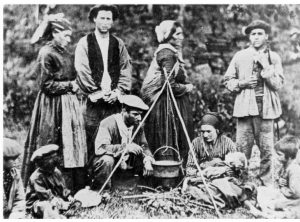 The Romani, or gypsies, are well known throughout Europe. They have also settled in the Basque Country. As seems to be common in many places where the Romani are found, they have created a language that combines their own with the local language. Euskara is no exception. The Erromintxela language uses the vocabulary of the Kalderash Romani but the grammar of Euskara. While evidence of this mixed language dates to the 19th century, it is only in the last few decades, as the language is in danger of being lost, that it has been studied in any detail.
The Romani, or gypsies, are well known throughout Europe. They have also settled in the Basque Country. As seems to be common in many places where the Romani are found, they have created a language that combines their own with the local language. Euskara is no exception. The Erromintxela language uses the vocabulary of the Kalderash Romani but the grammar of Euskara. While evidence of this mixed language dates to the 19th century, it is only in the last few decades, as the language is in danger of being lost, that it has been studied in any detail.
The Basques sailed far and wide in search of fishing grounds that would provide an economic advantage. During the course of these excursions, they naturally met other peoples and, to communicate, new languages were created synthesizing the two original ones. Two examples of these are with Iceland and several Native American tribes in Newfoundland…
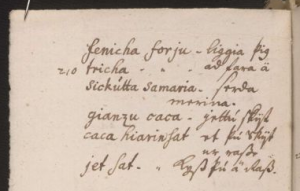 The Basques and the Icelanders had many encounters, some of them not so pleasant. However, their interactions were so extensive that a Basque-Icelandic pidgin formed, spoken in Iceland in the 17th century. This pidgin had a number of colorful phrases, including one for “go shag a horse“. Fortunately, the hostilities that arose way back in those seafaring days have been peacefully resolved.
The Basques and the Icelanders had many encounters, some of them not so pleasant. However, their interactions were so extensive that a Basque-Icelandic pidgin formed, spoken in Iceland in the 17th century. This pidgin had a number of colorful phrases, including one for “go shag a horse“. Fortunately, the hostilities that arose way back in those seafaring days have been peacefully resolved.
 One the Basques reached the Newfoundland shores and established their whaling refineries, they also had extensive interactions with the native populations, including the Algonquians. In several cases, pidgins arose, particularly with the Algonquians. When Basque sailors asked an Algonquian how he was (nola zaude) the response would often be apaizac obeto: the priests are better. This pidgin was used primarily in the 16th century, with the last attested use being in 1710. This is the oldest known pidgin in North America.
One the Basques reached the Newfoundland shores and established their whaling refineries, they also had extensive interactions with the native populations, including the Algonquians. In several cases, pidgins arose, particularly with the Algonquians. When Basque sailors asked an Algonquian how he was (nola zaude) the response would often be apaizac obeto: the priests are better. This pidgin was used primarily in the 16th century, with the last attested use being in 1710. This is the oldest known pidgin in North America.
Are there any others?
Did you know…?
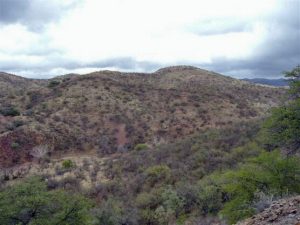 Arizona is a Basque word. It seems that it wasn’t that long ago that this seemed a fringe hypothesis, but now it appears on the National Park Service’s page. The state of Arizona gets its name from a ranch from the 1700s where silver was discovered. The name of that ranch, which still exists, is Arizona. It seems to have been named by Bernardo de Urrea and means “haritz ona” or “the good oak”. The original theory that Arizona might be a Basque word was proposed by William A Douglass, of the University of Nevada, Reno’s Center for Basque Studies, in 1979. It now seems to be a well accepted idea.
Arizona is a Basque word. It seems that it wasn’t that long ago that this seemed a fringe hypothesis, but now it appears on the National Park Service’s page. The state of Arizona gets its name from a ranch from the 1700s where silver was discovered. The name of that ranch, which still exists, is Arizona. It seems to have been named by Bernardo de Urrea and means “haritz ona” or “the good oak”. The original theory that Arizona might be a Basque word was proposed by William A Douglass, of the University of Nevada, Reno’s Center for Basque Studies, in 1979. It now seems to be a well accepted idea.
 That piece of lingerie, the basque, is named after traditional Basque costume. You have to be careful what you search for. If you enter the word “basque” into Google, you might not quite get what you expected. Your browser window might be filled with pictures of lingerie. What is now known as a basque was inspired by the traditional costume of Basque women (at least according to Wikipedia). The French were early adopters/adapters of the piece of clothing, but it spread from there to the rest of Western world.
That piece of lingerie, the basque, is named after traditional Basque costume. You have to be careful what you search for. If you enter the word “basque” into Google, you might not quite get what you expected. Your browser window might be filled with pictures of lingerie. What is now known as a basque was inspired by the traditional costume of Basque women (at least according to Wikipedia). The French were early adopters/adapters of the piece of clothing, but it spread from there to the rest of Western world.
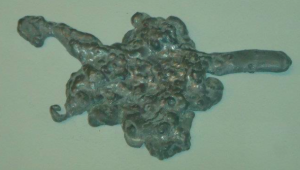 Molybdomancy is telling the future using molten lead. And it used to be practiced in the Basque Country. I stumbled on this curious word (and even more curious practice) on the Tumblr beautiful-basque-country. It seems that many cultures have the practice of dropping bits of molten lead into water and then divining the future from the shapes that are formed. In Bermeo, this was used to protect ships from bad luck (all I could find about this is this photo on a Facebook page…). Anyone know anything more about this?
Molybdomancy is telling the future using molten lead. And it used to be practiced in the Basque Country. I stumbled on this curious word (and even more curious practice) on the Tumblr beautiful-basque-country. It seems that many cultures have the practice of dropping bits of molten lead into water and then divining the future from the shapes that are formed. In Bermeo, this was used to protect ships from bad luck (all I could find about this is this photo on a Facebook page…). Anyone know anything more about this?
Quick Items of Note: Gernika film, Red Bay, Iparralde, Be Basque Talent Network
 A film about the bombing of Gernika, appropriately entitled Gernika, is currently being shot in Bilbao. As opposed to other films about the Spanish Civil War, this one focuses entirely on the city of Gernika and that fateful day in April.
A film about the bombing of Gernika, appropriately entitled Gernika, is currently being shot in Bilbao. As opposed to other films about the Spanish Civil War, this one focuses entirely on the city of Gernika and that fateful day in April.
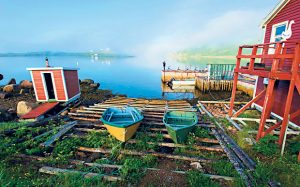 Likely you’ve heard about the Basque presence on the eastern Canadian coast. Red Bay is the heart of that historical activity. Red Bay is both a Canadian National Historic Site as well as a World Heritage Site, as designated by UNESCO due to the various archeological finds related to the Basque whaling operations in that area that have been discovered since the 1970s.
Likely you’ve heard about the Basque presence on the eastern Canadian coast. Red Bay is the heart of that historical activity. Red Bay is both a Canadian National Historic Site as well as a World Heritage Site, as designated by UNESCO due to the various archeological finds related to the Basque whaling operations in that area that have been discovered since the 1970s.
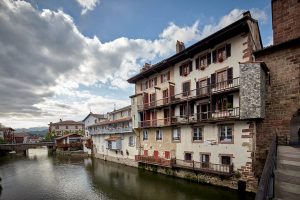 I’m admittedly biased in my “coverage” of the Basque Country, tending to focus on hegoalde where my dad and my mom’s grandparents are from. Of all of the time I’ve spent in the Basque Country, the vast majority of it has been in hegoalde. I’ve spent, at most, maybe 3 or so days in iparralde, most notably a couple of nights in Baiona with my wife a number of years ago. That said, the French side has much charm of its own and is certainly not to be forgotten. This article from the New York Times reminds us of that.
I’m admittedly biased in my “coverage” of the Basque Country, tending to focus on hegoalde where my dad and my mom’s grandparents are from. Of all of the time I’ve spent in the Basque Country, the vast majority of it has been in hegoalde. I’ve spent, at most, maybe 3 or so days in iparralde, most notably a couple of nights in Baiona with my wife a number of years ago. That said, the French side has much charm of its own and is certainly not to be forgotten. This article from the New York Times reminds us of that.
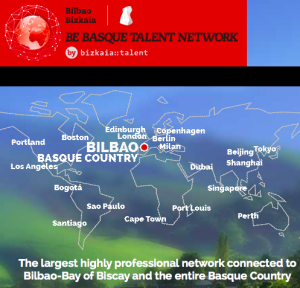 I’m not quite sure what Be Basque Talent Network is exactly. It seems to be a LinkedIn for people with a connection to the Basque Country or any interest in Basque. The reason to join it is, as stated on the website: To be part of the largest network of top professionals from over 75 countries around the world who are or wish to be linked to the Basque Country, regardless of origin. If you are a professional wishing to have stronger ties to the Basque Country, this might be useful.
I’m not quite sure what Be Basque Talent Network is exactly. It seems to be a LinkedIn for people with a connection to the Basque Country or any interest in Basque. The reason to join it is, as stated on the website: To be part of the largest network of top professionals from over 75 countries around the world who are or wish to be linked to the Basque Country, regardless of origin. If you are a professional wishing to have stronger ties to the Basque Country, this might be useful.
Basque Soccer Friendly Rescheduled
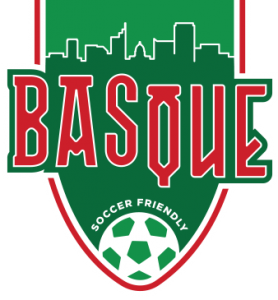 So, Athletic Bilbao did not win the Copa del Rey, Barcelona did. That means that Bilbao has to play a qualifying match for the Europe League championships on July 30th and cannot make the original July 29th date (in my last post, I got the date wrong — thanks to Teresa Franzoia for pointing that out) for the Basque Soccer Friendly against Tijuana. The good news: they are still coming, just a little earlier, now on July 18. You can still get tickets at the same places. The bad news: I can’t go now. And I know you are all disappointed. But, hopefully this is a huge success and maybe there will be other matches like this in the future. Can’t have too much of a good thing, can you?
So, Athletic Bilbao did not win the Copa del Rey, Barcelona did. That means that Bilbao has to play a qualifying match for the Europe League championships on July 30th and cannot make the original July 29th date (in my last post, I got the date wrong — thanks to Teresa Franzoia for pointing that out) for the Basque Soccer Friendly against Tijuana. The good news: they are still coming, just a little earlier, now on July 18. You can still get tickets at the same places. The bad news: I can’t go now. And I know you are all disappointed. But, hopefully this is a huge success and maybe there will be other matches like this in the future. Can’t have too much of a good thing, can you?
Basque Explorers in the Pacific Ocean by William A. Douglass
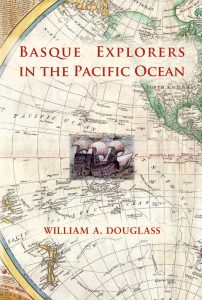 William A. Douglass, one-time Coordinator of what is now the Center for Basque Studies at the University of Nevada, Reno and prolific author on Basque history, is out with a new book on the Basque explorers who navigated the Pacific Ocean, from Elkano (the Basque sailor who took over Magellan’s expedition when Magellan was killed in the Philippines) to later explorers. Basque Explorers in the Pacific Ocean recounts the stories of these Basques and their role in Spanish and ultimately European activities in the Pacific. From the website:
William A. Douglass, one-time Coordinator of what is now the Center for Basque Studies at the University of Nevada, Reno and prolific author on Basque history, is out with a new book on the Basque explorers who navigated the Pacific Ocean, from Elkano (the Basque sailor who took over Magellan’s expedition when Magellan was killed in the Philippines) to later explorers. Basque Explorers in the Pacific Ocean recounts the stories of these Basques and their role in Spanish and ultimately European activities in the Pacific. From the website:
The Pacific Ocean was for several centuries, from the discovery of the Strait of Magellan in 1520 until Cook’s voyages in the 1700s, considered to be the “Spanish Lake.” However, Spain was never a monolithic entity and this book then considers “Spanish” exploration in the Pacific from the perspective of the Basques, who have an important maritime tradition and were key figures in Pacific exploration. From Juan Sebastián Elkano’s taking over command of the Victoria after Ferdinand Magellan’s death and completing the first circumnavigation of the planet to Andrés de Urdaneta’s discovery of the north Pacific route from the Philippines to modern-day Acapulco, Mexico, Basque mariners and ships were pivotal in European incursion into this vast area.
Basque Soccer Friendly Store Opening
 While the ultimate fate of the Basque Soccer Friendly, to be held on July 30 in Boise, rests on the performance of Athletic Bilbao this weekend against Barcelona, one thing that is not in doubt is that you’ll still be able to get your Basque Soccer Friendly gear! A retail space is opening up on 8th Street in Boise. In addition to being a place where you can get your team gear, it is a place for volunteers to meet and for people interested in the match to gather. It is open Wednesday-Sunday each week. Check it out!
While the ultimate fate of the Basque Soccer Friendly, to be held on July 30 in Boise, rests on the performance of Athletic Bilbao this weekend against Barcelona, one thing that is not in doubt is that you’ll still be able to get your Basque Soccer Friendly gear! A retail space is opening up on 8th Street in Boise. In addition to being a place where you can get your team gear, it is a place for volunteers to meet and for people interested in the match to gather. It is open Wednesday-Sunday each week. Check it out!






